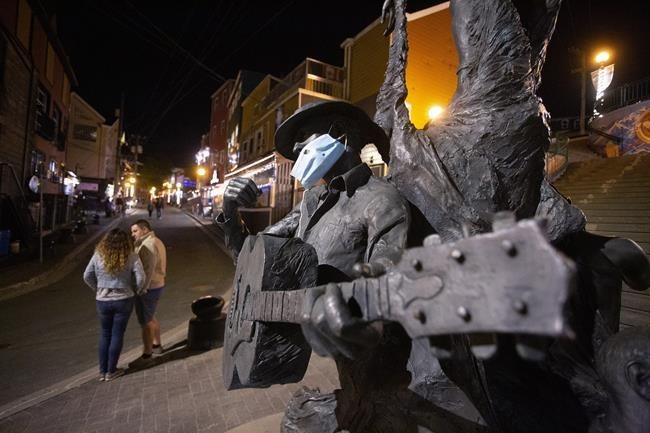ST. JOHN'S, N.L. — Prince Edward Island and Newfoundland and Labrador announced Monday they are temporarily pulling out of the Atlantic bubble as Nova Scotia and New Brunswick posted double-digit numbers of new cases.
"After careful consideration and consultation, I have made the tough decision to implement a circuit break," Premier Andrew Furey told reporters in St. John's, N.L. "Implementing this change for a two-week period is an effort to avoid a full lockdown."
In Charlottetown, P.E.I. Premier Dennis King announced what he said was a preventive move, "which we hope will allow us to maintain the level of almost ordinary life that we have been enjoying in this province."
King said all non-essential travel to and from the Island would be suspended until Dec. 7., at which time the situation would be re-evaluated. The changes come into effect Tuesday.
In Newfoundland and Labrador, as of Wednesday all visitors to the province from the Atlantic provinces will have to self-isolate for 14 days upon arrival, just like visitors from other parts of Canada.
The other two provinces in the region are maintaining their presence in the bubble for now. But both Nova Scotia Premier Stephen McNeil and New Brunswick Premier Blaine Higgs urged residents to stay close to stay home.
"I join my fellow premiers in cautioning against all non-essential travel over the next two weeks outside of our respective provinces," Higgs told reporters in Fredericton. "Now is not the time to travel to other areas."
The four Atlantic provinces formed their so-called bubble in July to allow residents to travel freely within the region, while those visiting from outside were required to isolate for 14 days.
Dr. Janice Fitzgerald, Newfoundland and Labrador's chief medical officer of health, pointed Monday to the ongoing outbreaks in New Brunswick and reported community spread in Nova Scotia when addressing how health officials would determine whether the bubble could be restored.
New Brunswick reported its seventh death and 15 new COVID-19 cases on Monday after reaching its highest daily number of cases Saturday, with 23 infections. There are now 89 active cases in the province.
Nova Scotia reported 11 new cases of COVID-19 Monday, after the province flagged potential exposure at nearly 40 locations in Halifax over the weekend. One of Monday's infections was first identified during a rapid-testing pilot program in downtown Halifax Saturday night.
Amid growing concerns of community spread, particularly among young people, stricter public health rules limiting gatherings came into effect in the Halifax region and neighbouring Hants County on Monday morning.
Last week, someone tested positive in Newfoundland and Labrador after returning to the province from Nova Scotia.
Prince Edward Island reported one new case of COVID-19 on Monday — a woman in her 40s who travelled to the Island from outside of the Atlantic region. The province has recorded just 69 cases since the pandemic began, all travel-related.
Newfoundland and Labrador reported two new cases Monday, both in the western region of the province. The first is a man between the ages of 20 and 39 who returned to the province after travelling to Manitoba. The second is the province's first case in a school, a girl who attends an elementary school in Deer Lake, where a cluster of connected cases was first identified last week. The province now has 23 active cases.
Rules were also tightened for Newfoundland and Labrador rotational workers Monday. Workers returning to the province from a job site now have to wait seven days to get a COVID-19 test rather than five. If the test is negative, they'll have limited freedoms, Fitzgerald said. They can visit family and public places, but they must wear a mask, even with family members, and continue to self-monitor for symptoms.
This report by The Canadian Press was first published Nov. 23, 2020.
— With files from Keith Doucette in Halifax.
Sarah Smellie, The Canadian Press



